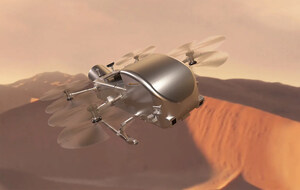HOUSTON, Sept. 13, 2013 /PRNewswire-USNewswire/ -- For the first time, the Mission Control Center (MCC) at NASA's Johnson Space Center in Houston has tested communications with a commercial, crew-capable spacecraft, as The Boeing Company conducted an interface test between the MCC and software planned for the company's CST-100 spacecraft.
(Logo: http://photos.prnewswire.com/prnh/20081007/38461LOGO)
Boeing has partnered with NASA to develop a fully integrated crew transportation system, with its CST-100 spacecraft and United Launch Alliance Atlas V rocket, in partnership with NASA's Commercial Crew Program (CCP). New commercial spaceflight capabilities being developed by NASA partners through commercial crew initiatives could eventually provide services to transport astronauts to and from the International Space Station, launching from U.S. soil.
The August test verified that Boeing could send and receive data from its Avionics Software Integration Facility to the MCC. The company's software facility and CST-100 spacecraft simulator are serving as precursors to integrated flight operations training.
"Every day, our connection to the humans living and working in space comes through the historic and hallowed MCC in Houston," said Ed Mango, NASA's CCP manager. "As low-Earth orbit opens to a growing commercial space industry, the ability of new spacecraft to communicate with existing space infrastructure is critical."
Through a reimbursable Space Act Agreement with NASA's Mission Operations Directorate, which began during CCP's second phase of development, Boeing is collaborating with the agency on mission planning, training and flight operations for its CST-100.
"Our continued partnership with NASA Mission Operations Directorate brings valued experience to our Commercial Crew Program," said John Mulholland, vice president of Boeing Commercial Crew Programs. "This fully integrated team will ensure that we can safely and affordably conduct missions."
Additional interconnectivity assessments conducted by Boeing will include software avionics testing for the ascent phase of flight and demonstrations that will put a human at the controls of the spacecraft simulator. A pilot will run through the critical phases of flight, including rendezvous and docking by firing thrusters, navigating state changes and adjusting the spacecraft attitude.
Boeing is on track to meet all 20 of its Commercial Crew integrated Capabilities (CCiCap) milestones by summer 2014. All of NASA's industry partners, including Boeing, continue to meet their established milestones in developing commercial crew transportation capabilities.
For more information about NASA's Commercial Crew Program and its aerospace industry partners, visit:
http://www.nasa.gov/commercialcrew
SOURCE NASA
WANT YOUR COMPANY'S NEWS FEATURED ON PRNEWSWIRE.COM?
Newsrooms &
Influencers
Digital Media
Outlets
Journalists
Opted In





Share this article